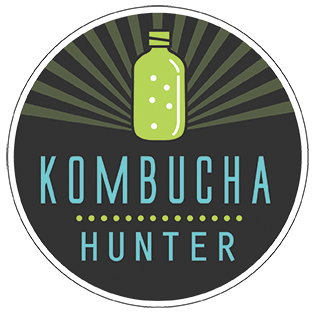The Fizz Factor
The number one question we hear from home-brewers is: “How do I get my kombucha really fizzy?” Hey, we get it—we love fizz too! There’s just something so satisfying about those bubbles; not to mention their aesthetic value in a glass or bottle!
Our Fig + Chamomile kombucha is one of our favorite brews for optimal fizz. Get the recipe here.
But fizz can be elusive and a time commitment. Which is why numerous commercial brewers force-carbonate their kombucha. In the case of home-brewing, where naturally-occurring carbonation is usually the only option, brewers often get frustrated when they feel like they’re doing everything as they should and there are still not enough bubbles. But do not despair!
While there isn’t a scientific formula that exists for optimal carbonation, we do have a few fizzy tips that we’d like to share with you, and we’ve listed them below, in no particular order. (If you want to trouble-shoot more, learn other effective techniques, or if you’ve never brewed a batch before, we would be thrilled to guide via one of our customized consultations!)
Use the highest quality ingredients you can afford
If you want a great second ferment, you must have a healthy first ferment. Room temp, cleanliness and quality are three factors you always want to keep in mind when brewing.
• If you’re using high-quality, organic teas, you will have a superior batch than if you’re using tea that is not organic. We recommend experimenting with different varieties of green and black teas. These are some of our favorites: Sencha and Assam.
• Don’t skimp on your starter. When it comes to the amount of starter in first ferment, it’s best to add a little more than a little less. Always use starter that is on the bottom of your vessel from your previous batch. It has the most yeast and therefore will help achieve better carbonation. And use only the starter that came from an unflavored, original batch. If you want to start completely fresh with a new scoby and starter, please consider one of our scoby's that were grown in the kind of starter we just described. You can find them all here.
• While you can use filtered water if you have a great filtration system, we always recommend natural spring water. It’s simply the purest. Pure, clean water = happy kombucha.
• When you brew up your sweet tea, start your batch as soon as the tea is at room temp. You want only the freshest tea in your brew.
Our Blueberry Maple Superfruit brew yields delightful carbonation. Get the full recipe here.
Brew consistently and experiment
If you’re not getting great fizz and desire more, there is a very simple solution: Keep brewing!
• Set up two vessels (or more!)—we have wonderful 1 gallon and 1/2 gallon glass vessels in our shop—and start parallel brews, using different teas or blends. Experiment with the lengths of first fermentation.
• Always log your batches. We created our Kombrew Log™ stickers just for that purpose! You always want to note the date you start your first ferment, and keep track of how much tea/water/sugar you used and when you started your brews.
• Experiment with your second ferment lengths: Bottle the same flavor in two or three different bottles (seal those caps really well!), and open each bottle at different times. Burp bottle 1 on day 2 or 3 and if it sounds like it’s not fizzing well, set aside for another 2 days. Sometimes, you may need to let a bottle sit for an extra 3 days. And once you refrigerate: Leave the bottle in the fridge for another 2 or 3 days (or longer). We’ve found that the longer you let your brews sit in the fridge before consuming, the more fizz you will have overall.
Fizzy and fabulous—that's our Purple Magic flavor. Discover what makes it so special, here.
Sweet and Tart: A Delicate Balance
For more fizz, find that sweet spot in your first ferment, when tart and sweet are nicely balanced.
• You want the sugar in second ferment, because the yeast in your finished kombucha will continue to eat it up and release the nice CO2 back into your bottles. So if you’re bottling a tart batch and not adding much sugar to it, you won’t have much fizz when you open that bottle. And be sure to always seal your bottles—whether they're flip top, or use a screw-on lid—extra tight when you're bottling for second ferment. We recommend having a mitt with a rubber grip around, like this one, to help seal and open bottles!
• For a nice burst of sweetness, pop in a few chunks of pineapple. It’s still effective in small quantities, but won’t overpower any of the other flavors in the batch. You can also add a sweet syrup of some kind.
If you want to trouble-shoot more, learn other effective techniques, or if you’ve never brewed a batch before, we would be thrilled to guide via one of our customized consultations!



